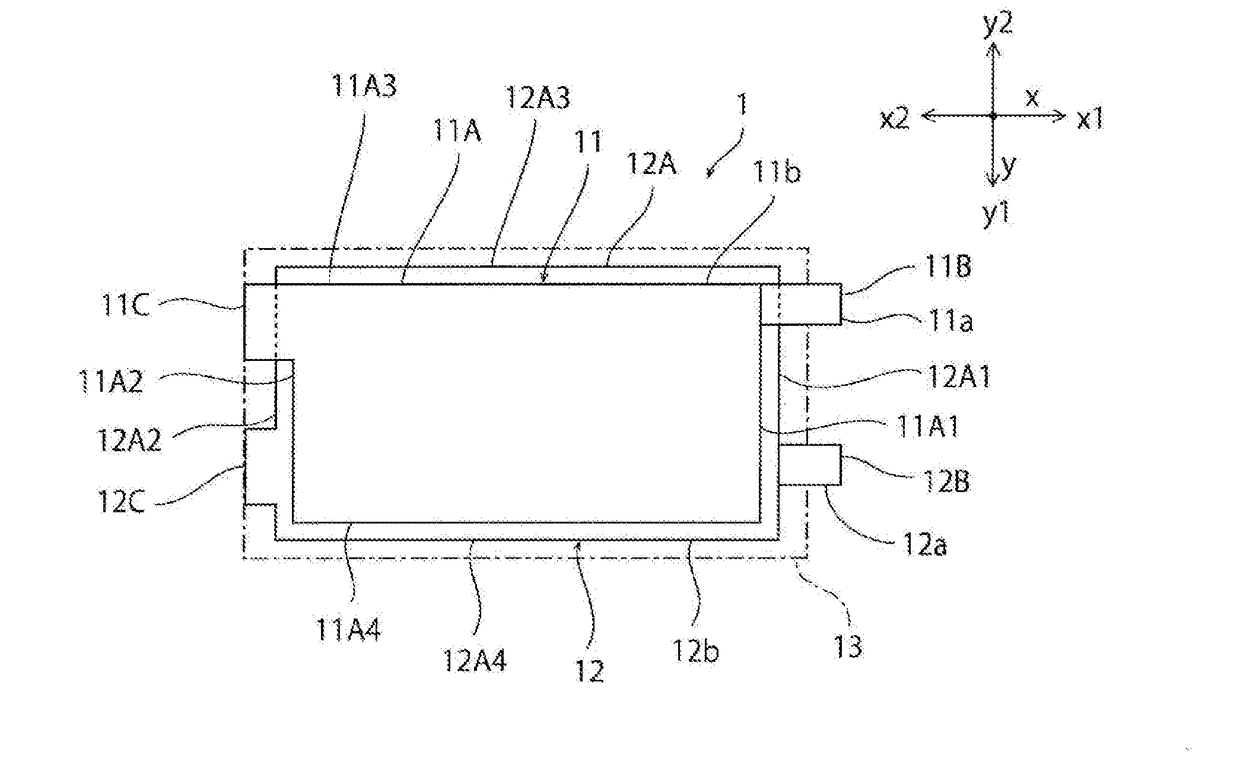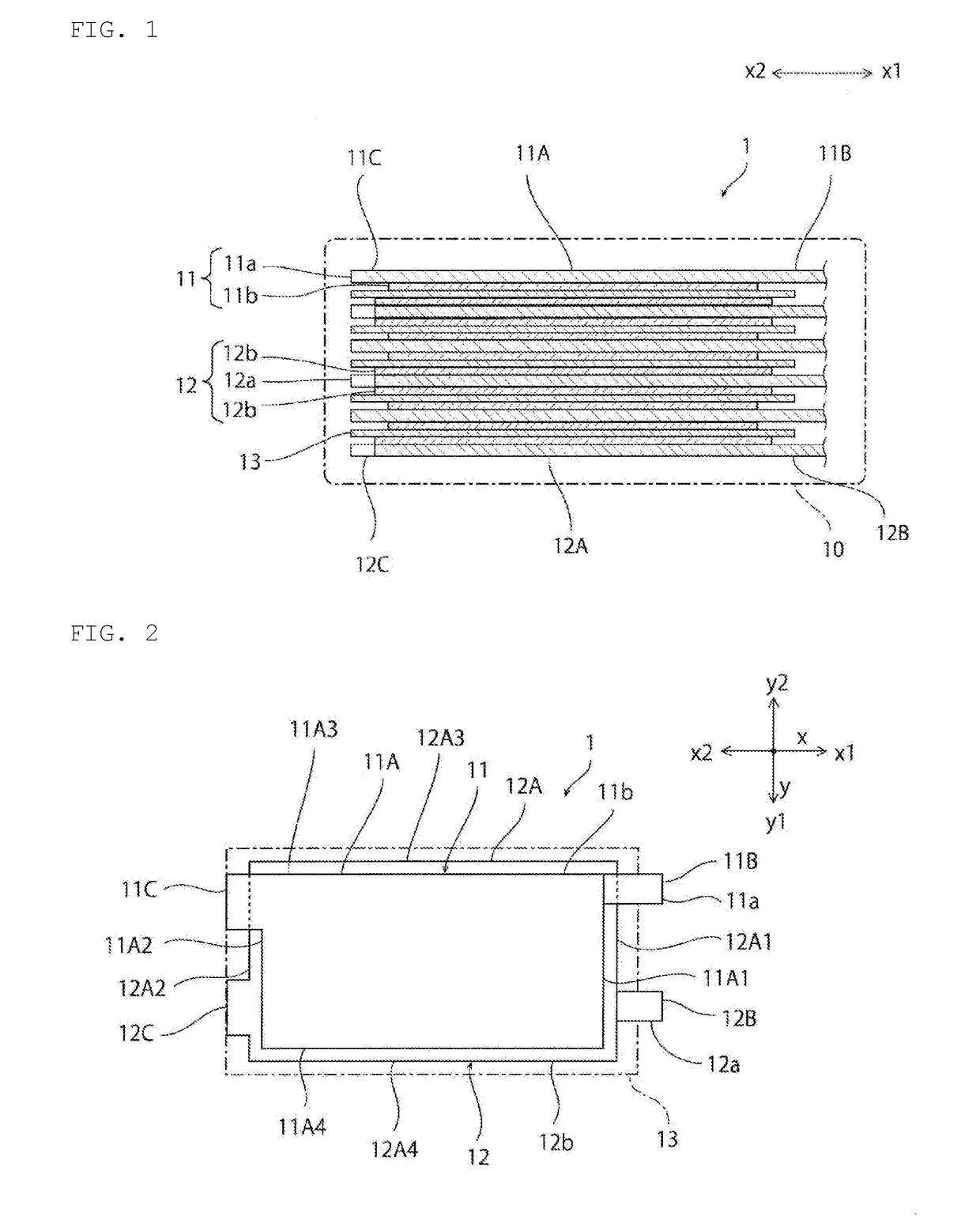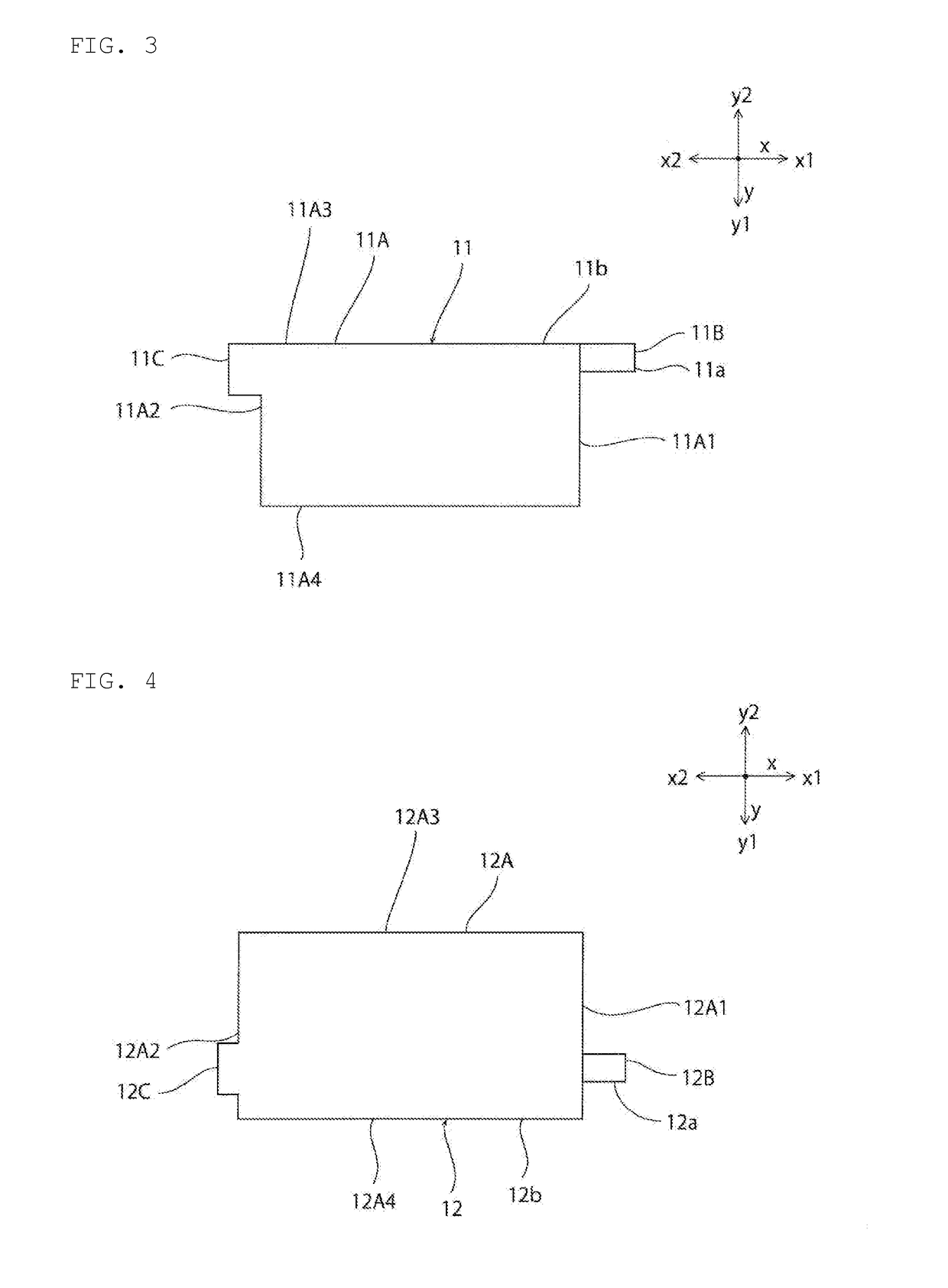Electric double-layer capacitor and method for manufacturing the same
a technology of double-layer capacitors and capacitors, which is applied in the direction of capacitors, multiple hybrid/edl capacitors, and electrolytic capacitors, can solve the problems and achieve the effect of low mechanical strength required for separators and increased mechanical strength of separators
- Summary
- Abstract
- Description
- Claims
- Application Information
AI Technical Summary
Benefits of technology
Problems solved by technology
Method used
Image
Examples
first embodiment
[0027]FIG. 1 is a schematic cross-sectional view of an electric double-layer capacitor according to the present embodiment. FIG. 2 is a schematic plan view of a main part of the electric double-layer capacitor according to the present embodiment. In FIG. 2, illustration of an outer case 10 is omitted.
[0028]As shown in FIG. 1, the electric double-layer capacitor 1 has a first electrode 11, a second electrode 12, a separator 13, and an outer case 10.
[0029]The first electrode 11 and the second electrode 12 are opposed to each other with the separator 13 interposed therebetween. Specifically, a plurality of first electrodes 11 and a plurality of second electrodes 12 are alternately laminated with the separator 13 interposed therebetween. The first electrodes 11 are electrically connected to each other by a first extended terminal (not shown), and is extended to the outside of the outer case 10. The second electrodes 12 are electrically connected to each other by a second extended termin...
second embodiment
[0076]FIG. 5 is a schematic plan view of an electric double-layer capacitor 1a according to the present embodiment.
[0077]In the present embodiment, the electric double-layer capacitor 1a includes a first electric double-layer capacitor element 31a enclosed in a package 31c and a second electric double-layer capacitor element 31b. Each of the first and second electric double-layer capacitor elements 31a and 31b has a rectangular shape whose longitudinal direction is parallel to the x-axis direction (second direction). The first electric double-layer capacitor element 31a and the second electric double-layer capacitor element 31b are arranged along the x-axis direction. Therefore, the package 31c also has a rectangular shape whose longitudinal direction is parallel to the x-axis direction.
[0078]The package 31c is provided with a rectangular first cell 31c1 and a rectangular second cell 31c2 adjacent to the first cell 31c1 in the x-axis direction. A first electric double-layer capacito...
example 1
[0118]A nonwoven fabric of polyacrylonitrile having a thickness of 17 μm and an average fiber diameter of 0.3 and formed of a polyacrylonitrile homopolymer was heated at 230° C. for 72 seconds in an oxidizing atmosphere, and used as a separator. Using the resulting separator, an electric double-layer capacitor having substantially the same configuration as the electric double-layer capacitor 1 according to the first embodiment was fabricated.
PUM
 Login to View More
Login to View More Abstract
Description
Claims
Application Information
 Login to View More
Login to View More - R&D
- Intellectual Property
- Life Sciences
- Materials
- Tech Scout
- Unparalleled Data Quality
- Higher Quality Content
- 60% Fewer Hallucinations
Browse by: Latest US Patents, China's latest patents, Technical Efficacy Thesaurus, Application Domain, Technology Topic, Popular Technical Reports.
© 2025 PatSnap. All rights reserved.Legal|Privacy policy|Modern Slavery Act Transparency Statement|Sitemap|About US| Contact US: help@patsnap.com



